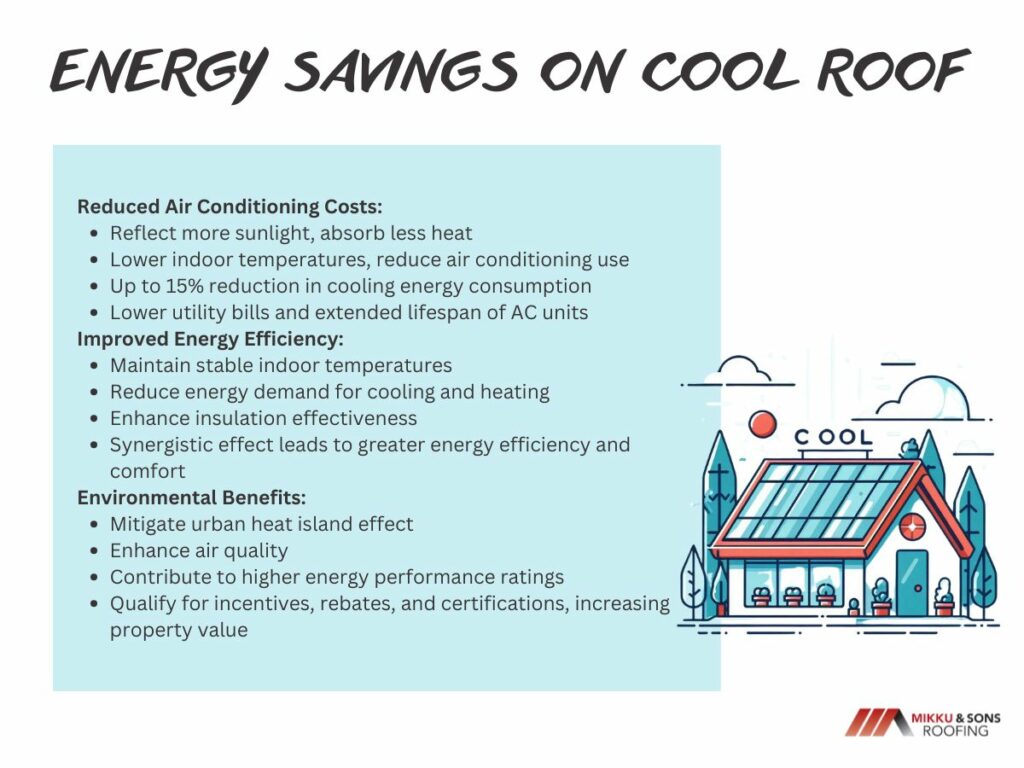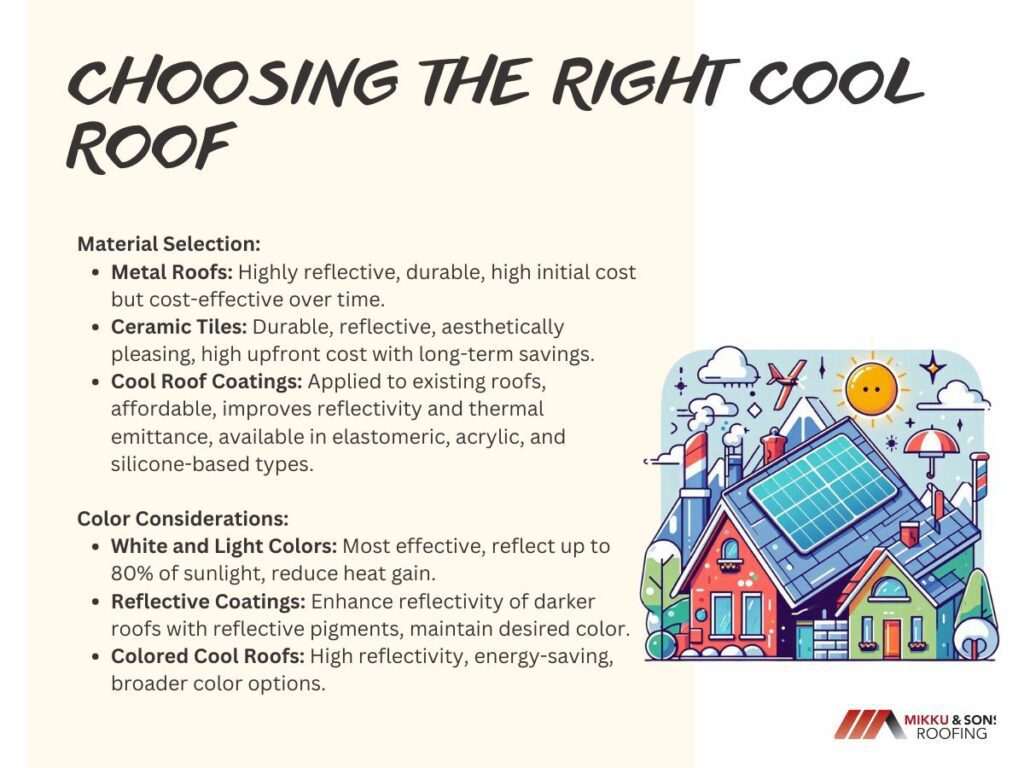

Assessing the energy-saving benefits of cool roofs in Arizona is crucial, given the state's hot and sunny climate. Cool roofs, designed to reflect more sunlight and absorb less heat, offer significant advantages in such regions. They can drastically reduce air conditioning costs, enhance overall energy efficiency, and provide substantial environmental benefits.
This evaluation explores how cool roofs can lower energy consumption, improve comfort, and contribute to a more sustainable environment in Arizona. By understanding these benefits, homeowners and businesses can make informed decisions about adopting cool roofing solutions tailored to the state's unique climatic conditions.
The concept of cool roofs has gained significant traction in recent years due to their numerous advantages, particularly in terms of energy savings and environmental impact.
Cool roofs are designed to reflect more sunlight and absorb less heat than standard roofs, leading to substantial benefits for homeowners, businesses, and the environment. This article explores the detailed advantages of cool roofs, focusing on reduced air conditioning costs, improved energy efficiency, and environmental benefits such as mitigating the urban heat island effect and enhancing air quality.

One of the most immediate and noticeable benefits of cool roofs is the reduction in air conditioning costs. Traditional roofs can absorb a significant amount of heat, especially during hot summer months, causing indoor temperatures to rise. This increase in indoor temperature often leads to a higher dependence on air conditioning systems to maintain a comfortable living environment. Cool roofs, however, are designed to reflect more sunlight and absorb less heat, which can significantly reduce indoor temperatures.
By lowering the amount of heat that enters a building, cool roofs decrease the need for air conditioning. This reduction can lead to substantial energy savings, especially in regions with hot climates.
Cool roofs can reduce cooling energy consumption by up to 15%, depending on the building's location, climate, and specific roofing materials used. These savings translate directly into lower utility bills, providing a tangible financial benefit to homeowners and businesses alike.
Moreover, the decreased reliance on air conditioning systems can also extend the lifespan of these units. Air conditioning systems that operate less frequently or under less strain are likely to experience fewer mechanical issues and require less maintenance, further enhancing the cost savings associated with cool roofs.
Cool roofs contribute to overall improved energy efficiency in buildings. By reflecting more sunlight and absorbing less heat, cool roofs help maintain more stable indoor temperatures. This stability reduces the energy demand for both cooling and, to a lesser extent, heating, as the building remains closer to the desired indoor temperature without the need for constant adjustments.
In addition to reducing energy consumption, cool roofs can also enhance the effectiveness of insulation materials. By keeping the roof surface cooler, these roofs reduce the heat transfer into the building, allowing insulation to work more effectively. This synergistic effect between cool roofs and insulation can lead to even greater energy efficiency and comfort within the building.
Energy efficiency benefits of cool roofs can contribute to the overall energy performance rating of a building. Buildings with high energy performance ratings often qualify for incentives, rebates, or certification programs that recognize sustainable and energy-efficient building practices. This recognition can enhance the market value of the property, making it a more attractive option for potential buyers or tenants.
Beyond the immediate energy savings, cool roofs offer significant environmental benefits. One of the most critical environmental advantages is the reduction of the urban heat island (UHI) effect.
The UHI effect occurs when urban areas experience higher temperatures than their rural surroundings, primarily due to the extensive use of heat-absorbing materials like asphalt and concrete. This temperature disparity can lead to increased energy consumption, higher emissions, and adverse health effects.
Cool roofs play a vital role in mitigating the UHI effect. By reflecting more sunlight and reducing heat absorption, cool roofs help lower ambient temperatures in urban areas. This cooling effect can extend beyond individual buildings, contributing to a cooler urban environment. As more buildings adopt cool roofing materials, the cumulative impact can lead to a significant reduction in the UHI effect, resulting in lower overall temperatures in urban areas.
The reduction in urban temperatures can also alleviate the strain on local energy grids during peak usage periods, typically on hot summer days. With less energy required for cooling, power plants can operate more efficiently, and the risk of blackouts or power shortages decreases. This stability is crucial for maintaining reliable energy supplies and ensuring the resilience of urban infrastructure.
Another important environmental benefit of cool roofs is the potential for improved air quality. By reducing the overall energy demand, especially from air conditioning systems, cool roofs help decrease the emissions associated with power generation. Power plants, particularly those that rely on fossil fuels, are significant sources of air pollutants, including carbon dioxide (CO2), sulfur dioxide (SO2), and nitrogen oxides (NOx). These pollutants contribute to air quality issues such as smog, acid rain, and respiratory problems.
Cool roofs indirectly contribute to better air quality by lowering energy consumption and, consequently, reducing the need for power generation. This reduction in emissions can have a positive impact on public health, particularly in urban areas where air pollution is a significant concern. Improved air quality can lead to lower rates of respiratory illnesses, cardiovascular diseases, and other health problems associated with poor air quality.
The widespread adoption of cool roofs can contribute to global efforts to combat climate change. By reducing energy consumption and lowering greenhouse gas emissions, cool roofs help mitigate the overall environmental footprint of buildings. This contribution is especially important in the context of increasing urbanization and the growing demand for energy in cities worldwide.
As the push for energy-efficient and environmentally friendly building solutions grows, cool roofs have become an increasingly popular choice for homeowners and businesses. These roofs, designed to reflect more sunlight and absorb less heat, offer numerous benefits including reduced energy costs, improved comfort, and environmental advantages.
However, the decision to install a cool roof involves careful consideration of both initial and long-term costs. Additionally, selecting the right cool roof requires understanding the various materials and color options available. This article delves into the cost considerations of cool roofs and provides guidance on choosing the best materials and colors to maximize their benefits.
The initial investment in a cool roof can vary significantly based on several factors, including the type of material used, the complexity of the installation, and the size of the roof. Understanding these cost factors is crucial for homeowners and businesses to make informed decisions.
While the initial cost of a cool roof might be higher than traditional roofing options, the long-term savings in energy costs can make it a financially sound investment. Cool roofs reduce the amount of heat entering a building, thereby decreasing the reliance on air conditioning systems.
Selecting the right cool roof involves considering both the material and color to maximize its benefits. The choice of materials and colors can significantly impact the roof’s performance and cost.

Material Selection: Cool roofs can be made from a variety of materials, each offering distinct advantages:
Color Considerations: The color of a cool roof plays a crucial role in its effectiveness. Lighter colors are more effective at reflecting sunlight and reducing heat absorption compared to darker colors. This principle applies across all roofing materials.
The energy-saving benefits of cool roofs in Arizona are substantial, making them a valuable investment for homeowners and businesses. By reflecting more sunlight and absorbing less heat, cool roofs can significantly reduce air conditioning costs, enhance energy efficiency, and mitigate environmental impacts like the urban heat island effect.
As Arizona continues to experience high temperatures, adopting cool roofs can contribute to lower energy consumption, improved indoor comfort, and a more sustainable future. Understanding and implementing cool roofing solutions can lead to long-term financial savings and environmental benefits for the state.
